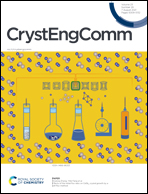Regulation of electronic properties of ZnO/In2O3 heterospheres via atomic layer deposition for high performance NO2 detection
Abstract
Metal oxide semiconductor heterostructures are promising for gas sensors due to their unique chemical and electronic properties at the heterointerface. In this work, a highly sensitive and selective gas sensor for the detection of nitrogen dioxide (NO2) is reported based on In2O3/ZnO heterogeneous nanospheres designed by atomic layer deposition (ALD). Their electronic properties at the In2O3/ZnO heterogeneous interface can be tuned by varying ZnO ALD cycles. Gas sensing tests show that ZnO ALD significantly improves the sensor performance of In2O3 nanospheres, rendering a response of 7.9 to 10 ppm NO2 even at room temperature (RT). The sensor based on In2O3/ZnO with 30 cycles of ZnO ALD delivers the best response of 139.9 to 10 ppm NO2 at an operating temperature of 180 °C, showing a nearly 6-fold enhancement over pristine In2O3. Meanwhile, the In2O3/ZnO sensor also exhibits a low limit of detection of 35 ppb, which allows for reliable detection of sub-ppm NO2. The excellent sensor performances are correlated to the modulation of electron depletion layers at the In2O3/ZnO heterointerface, which sheds some light on designing new materials via ALD for the detection of hazardous gas molecules.

- This article is part of the themed collection: Nanomaterials


 Please wait while we load your content...
Please wait while we load your content...